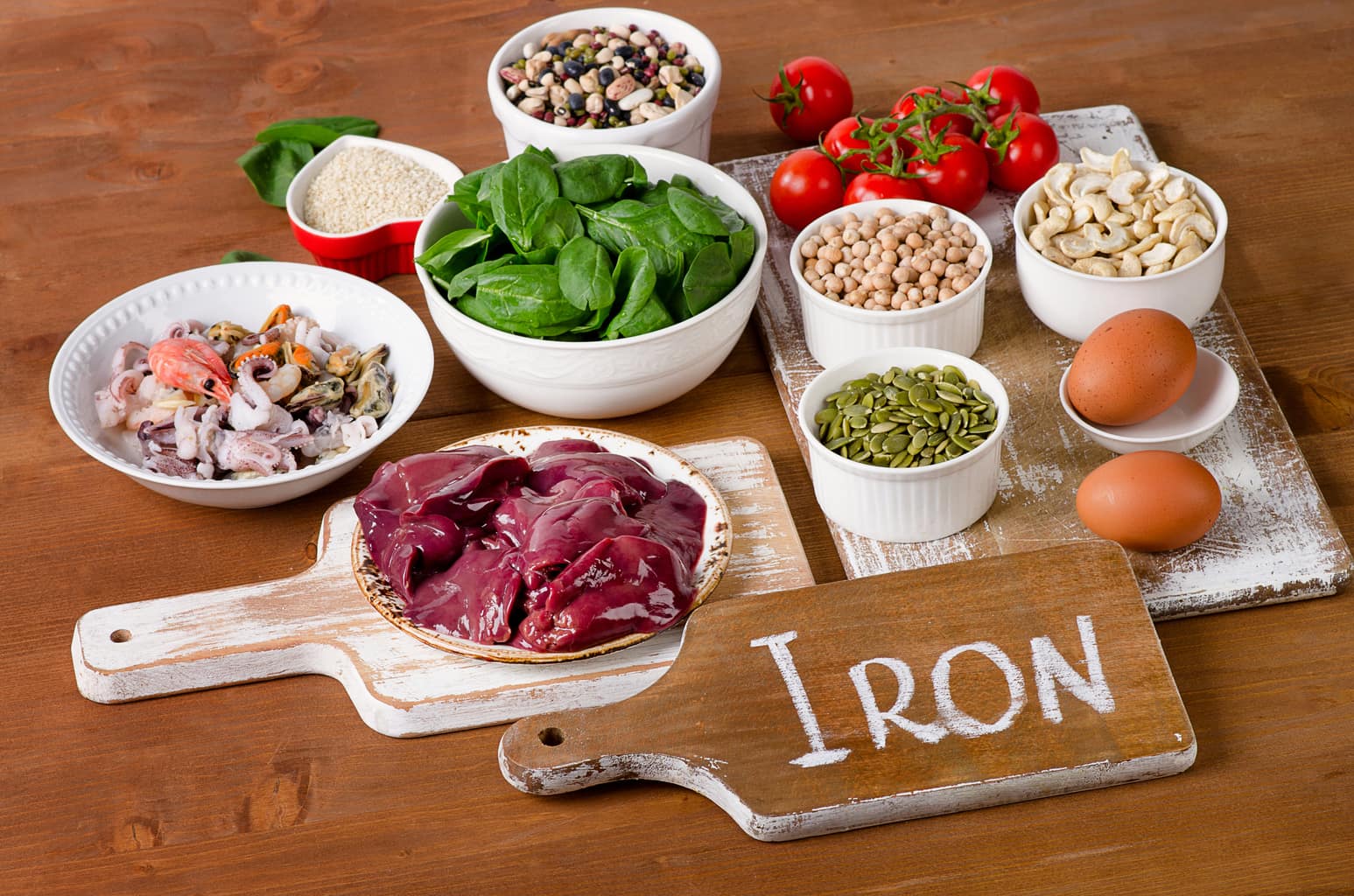
[cmamad id=”10593″ align=”center” tabid=”display-desktop” mobid=”display-desktop” stg=””]
Iron performs an essential role in the body.
As a transition metal, it has many electrons in its outer shell.
And this property is necessary for life as we know it.
If you remember your chemistry, you remember that atoms have electrons.
These perform all sorts of different things depending on the interaction.
In this case, the body pulls electrons from the iron and donates them to oxygen in the last stage of energy production.

You may also remember that metals are toxic — but we still need some iron.
The way that we stay safe as we use iron in our bodies is that the enzymes that do the work also bind the iron inside them.
This protects the iron from uncontrolled reactions.
But the same electron-donating properties that make iron essential also can make it dangerous in its free state.
[cmamad id=”10594″ align=”center” tabid=”display-desktop” mobid=”display-desktop” stg=””]
Free iron tends to produce free radicals, and this can lead to accelerated aging.
It does this by increasing lipofuscin — a mass of crosslinked protein and lipids sometimes called “age pigment.”

The lipofuscin expert, Alexei Terman, argues that lipofuscin essentially is aging.
Lipofuscin increases with age and can sometimes occupy up to 75% of the cell’s internal volume.
Lipofuscin happens mainly in the lysosomes.
A lysosome is an organelle inside of every cell that’s responsible for degrading and recycling used cell components.

Lysosomes are relatively large. They can engulf and degrade whole mitochondria and other worn-out cell components.
But the lysosome cannot downgrade the lipofuscin — it is resistant to the enzymes.

Dr. Drahota isolated lipofuscin in this study and added it to a healthy culture.
As expected, it was taken-up by the cell’s lysosomes.
But he found that after 21 days, the lipofuscin remained completely unchanged.
[lipofuscin] are either nondegradable or at best only very slowly degradable by the normal cell lysosomal system.
The cell lacks the metabolic machinery to degrade lipofuscin — so it just builds up.
The problem with this is that the lysosomes are responsible for keeping the cell young and renewing the components.
When the lysosome is full of lipofuscin, it cannot participate in cell renewal since it is bogged down.
This means that the cell must use worn-out mitochondria.
And these accumulate even more damage over time.
Postmitotic cells accumulate biological garbage because they are not renewed by cell division.
Here are the fundamentals of what causes aging: the cell is forced to use worn-out components because lipofuscin disabled the lysosomes.
Think of it like old machinery you can’t buy replacement parts for anymore.
Now, to figure out how to slow the process down, you need first to understand lipofuscin and how it forms.

Lipofuscin from the neurons is a cross-linked mass of lipids and proteins weighing about 7,000 daltons on average.
It contains between 30–70% fat and 20–50% protein.
The first step in lipofuscin formation in the ingestion of iron-containing cellular components by the lysosomes.
Here, free iron becomes liberated from the heme.
This can create a hydroxy radical (·OH), a very reactive molecule with an unpaired electron.

The hydroxy radical (·OH) steals a hydrogen (H·) from a polyunsaturated fatty acid, forming a lipid radical (and H₂O).
The lipid radical then reacts with oxygen, ultimately forming malondialdehyde — which is a marker of oxidative stress.
This malondialdehyde is the cross-linking agent, which readily reacts with proteins.
It can cross-link phospholipids too, these are fats contained in the cell wall.
But they have a free protein group which can become cross-linked.
This process can form a chain reaction.
In fact, one free radical can oxidize multiple fatty acid chains and form multiple cross-linking molecules (MDA).
This reaction happens mainly in the lysosomes because this is where free iron becomes liberated.
Rapidly multiplying cells dilute the lipofuscin through division.
But some cells, like the neurons, don’t divide and so, lipofuscin accumulates.
Indeed, Hydra, a primitive multicellular organism composed only of cells that are continuously renewed by proliferation, do not seem to show any signs of aging.
This is why you should probably avoid supplemental iron.
You don’t want too much iron in your system, we’ve shown you how too much iron can be harmful.

Most everyone on this planet gets enough iron from food already.
In fact, it might be a good idea to avoid enriched rice and bread.
Also, many multivitamins contain iron in a particulate form.
The problem is that the iron-storage protein, ferritin, cannot store this form of iron quickly.
And polyunsaturated fatty acids (PUFAs) are more prone to peroxidation than saturated and mono-unsaturated.
You know how much we hope you avoid those.
Vitamin E and CoQ₁₀ might offer the best protection since these are fat-soluble antioxidants. And they will naturally associate with the oxygen-sensitive lipids.
They are capable of safely intercepting free radicals and terminating the chain reaction.
Vitamin C, melatonin, and riboflavin (B₂) are safe water-soluble antioxidants.
Vitamin K is both fat- and water-soluble.

http://onlinelibrary.wiley.com/doi/10.1046/j.1432-1033.2002.02869.x/full
Studies on Chemical Nature of Lipofuscin (Age Pigment) Isolated from Normal Human Brain
http://link.springer.com/article/10.1007/BF02532441
THE FINE STRUCTURE OF LIPOFUSCIN AGE PIGMENT IN THE NERVOUS SYSTEM OF AGED MICE
http://jcb.rupress.org/content/26/3/779.abstract
Tissue Culture Loading Test With Storage Granules From Animal Models of Neuronal Ceroid Lipofuscinosis (Batten Disease): Testing Their Lysosomal Degradability by Normal and Batten Cells
http://onlinelibrary.wiley.com/doi/10.1002/ajmg.1320570220/full

Leave a Reply